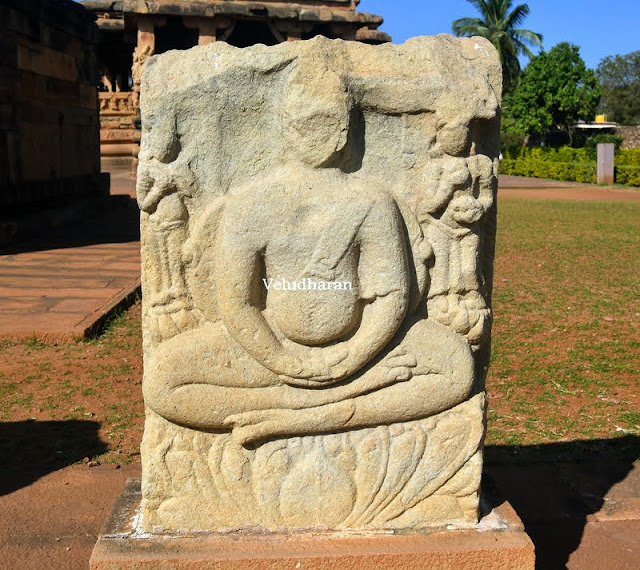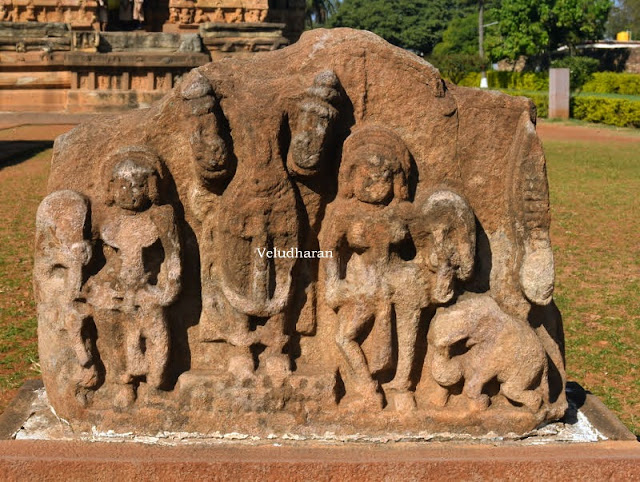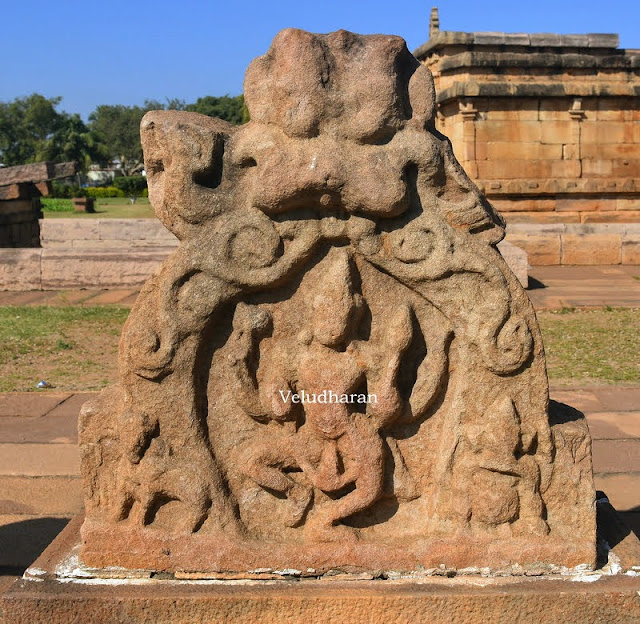The visit to this Archaeological
Museum at Aihole was a part
of “The Hampi, Badami, Pattadakal, Mahakuta and Aihole temples Heritage visit”
organized by வரலாறு விரும்பிகள் சங்கம் Varalaru Virumbigal Sangam – VVS and எண்திசை வரலாற்று மரபு நடைக்குழு, between 24th December to 28th December
2022. I sincerely thank the
organizers Mrs. Radh, Mrs. Nithya Senthil Kumar, and Mr. Senthil Kumar.
The
legend of Aihole
The name Ayyavolal
is derived from Aryavolal or Aryapura ( the valley of the elders ). In the local
language, it is known as Aivalli /Aiholli.
As per the legend, Parashurama, after killing
the Kshatriya-s, is said to have washed his axe in the Malaprabha river. The
waters of the river turned red due to blood, causing the people to exclaim, "Ai
Holi" ( Ai, the river... !!! ). Hence the name Aiholi, which has been corrupted to the
present name of Aihole.
The
Archaeological Museum
The Archaeological Museum is located behind
the Durga Temple, in the Durga temple complex. It was originally planned as a
sculpture shed in 1970 to collect and exhibit the sculptures, inscriptions, and architectural members found by way of exploration, and excavation in and around
Aihole. It was converted into a full-fledged museum in the year 1987, and
extended in the year 2000.
The
collection in the Museum
The museum has a rich collection of
sculptures belonging to the period of the Badami Chalukyas (543-757 CE), the
succeeding Rashtrakuta-s of Malkhed (757-950 CE) and the Chalukya-s of Kalyana
(950-1250 CE). Jainism is represented by sculptures of Tirthankara,
Yaksha, and Yakshi. Yaksha and Yakshi are male and female deities attendant upon
each Tirthankara.
Immediately in front of the entrance, is
displayed the most beautiful sculpture of Kushmandi Yakshi, dated to late 7th
century CE. Kushmandi or Ambika, is a female attendant of Neminatha, the 22nd
Tirthankara. She is also known as Amra-Sakshi. Here she is supposed to be
sitting under a ( Amra ) mango tree. The leaves are similar to mango leaves but
the shape of the fruit is unusual. She is worshipped as a mother goddess.
In the course of developments in Jainism, Yaksha-s
and Yakshi-s, assumed far greater importance, next only to that of the
Tirthankaras. By the time of the Badami
Chalukya-s the religious practices had become complex enough to include worship
of Yaksha-s and Yakshi-s also. In the western half of the Deccan, Jainism had
grown deep roots. Evidence suggests that by the middle of the 4th century CE, Jainism was
well established in Karnataka. The Ganga-s and the Kadamba-s had patronized
Jainism.
There are two important Jaina edifices at
Aihole. Jain temple on the Meguti hill, visible from far away. The sculpture of
Kushmandi kept in the museum, was brought from this temple. On the northern
wall of this temple is an important inscription in Sanskrit (dated 634 CE) of
minister and a Poet Ravikirti, in the reign of Pulakeshi-II. The minister, who must have
been a poet of repute, compares himself with Kalidasa and Bharavi. Contemporary
inscriptions prove that Sanskrit had achieved prominence, but the Kannada Language
had remained popular among the people.
The Buddha image in gallery No. I, seated on a
throne, in Padmasana, is from the two storyed, Buddhist temple at Aihole,
which is situated near the steps, leading to the Meguti temple.
The numerous sculptures of the Hindu religion
represent various sects like Shaiva, Vaishnava, Saurya, Ganapatya, Skanda
Kärti- keya, Hariti and Saptamartrikas.
The Shaiva images displayed in the museum are
Bhikshatana Shiva, Nataraja, Ardhanarishvara, Gajasuravadha/Gajasamharamurti, Veerabhadra and Parvati, Shiva's consort is represented as Mahishasuramardini.
Numerous individual images of seated Ganapati,
found at Aihole, testify to a strong cult of the Gana-patya, who considered
Ganapati as the supreme god.
The cult associated with Skanda-Kartikeya as Mahasena,
the commander of the army of the gods, goes back to an early period. At Aihole,
Kartikeya images have been mostly depicted on architectural members.
Many images of Saptamatṛikäs
(seven divine mothers) have been found at Aihole. The seven mothers are
Brahmani, Mäheshwari, Kaumari, Vaishnavi, Varahi, Indrani, and Chamunda. They
are accompanied by Shiva or Ganapathi on both sides. The worship of Saptamatrikas is
associated with Shakti worship, the female principle in the Tantrik form of
Hinduism.
A separate cult of the Surya ( Sun worshipers )
must have been popular at Aihole. Images of Surya, holding a lotus ( symbolic of
the Sun in Hindu mythology ) in both hands have been found. A shrine
dedicated to Suryanarayana is situated very near the Ladkhan temple, with a
life-size image of Surya.
Surya, holding a lotus
Sculptures with the upper body of a human and the lower
portion of a serpent, indicate a Näga cult of snake worshipers. Nagas are
believed to reside in the underworld (Pātāla). Nägas are worshiped for
fertility and childbearing.
Royal Patronage boosted the popularity of
the ancient Vedic religion and Vedic
ceremonies like the Ashvamedha, Agnişthoma, and Vajapeya sacrifices (Yajna).
Ref:
An Archaeological
Survey of India Book let on Aihole Museum...
LOCATION OF THE
MUSEUM: CLICK HERE











































மிகச் சிறப்பு ஐயா. அருமை
ReplyDeleteநன்றி சசி...
Delete